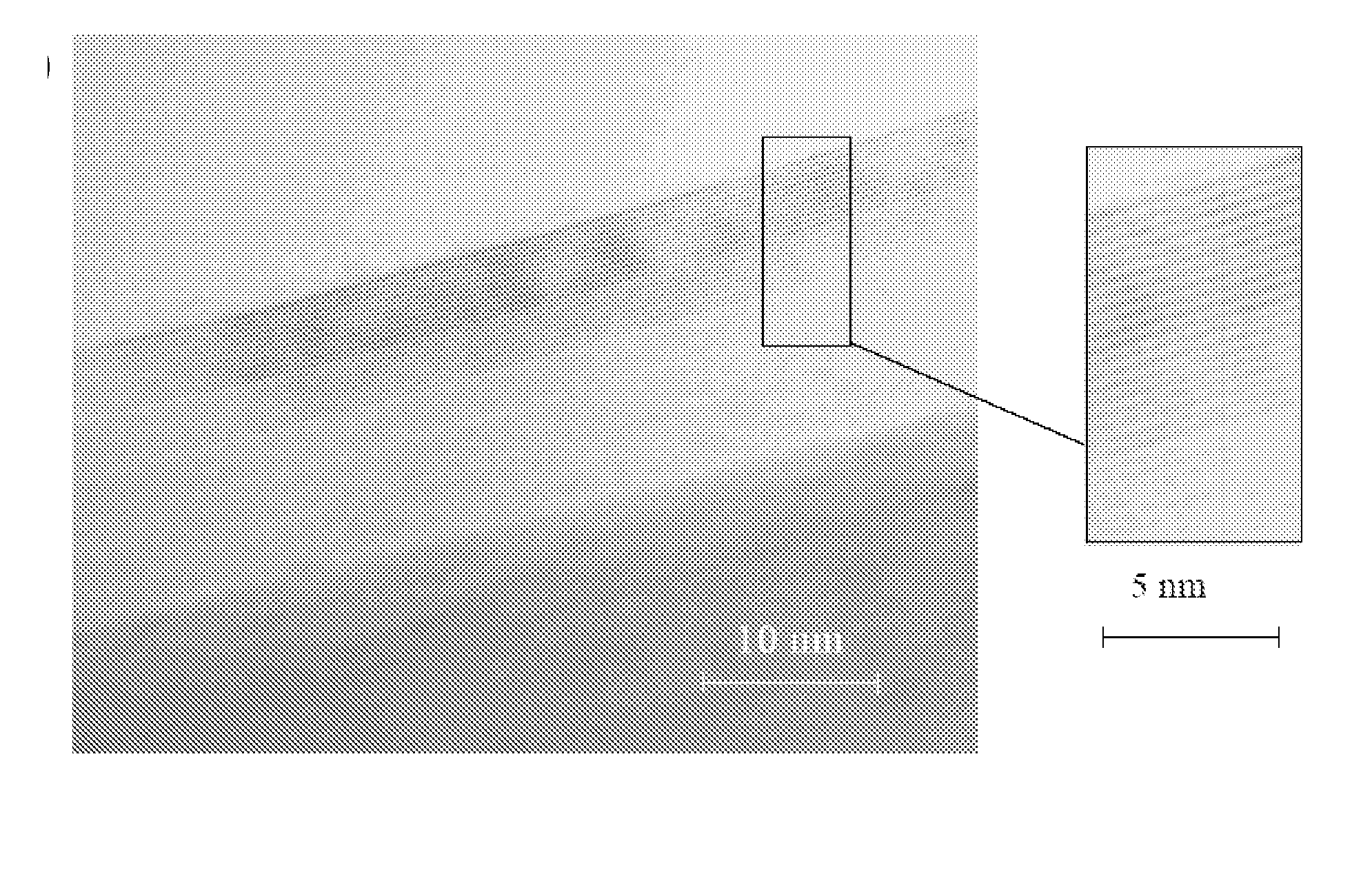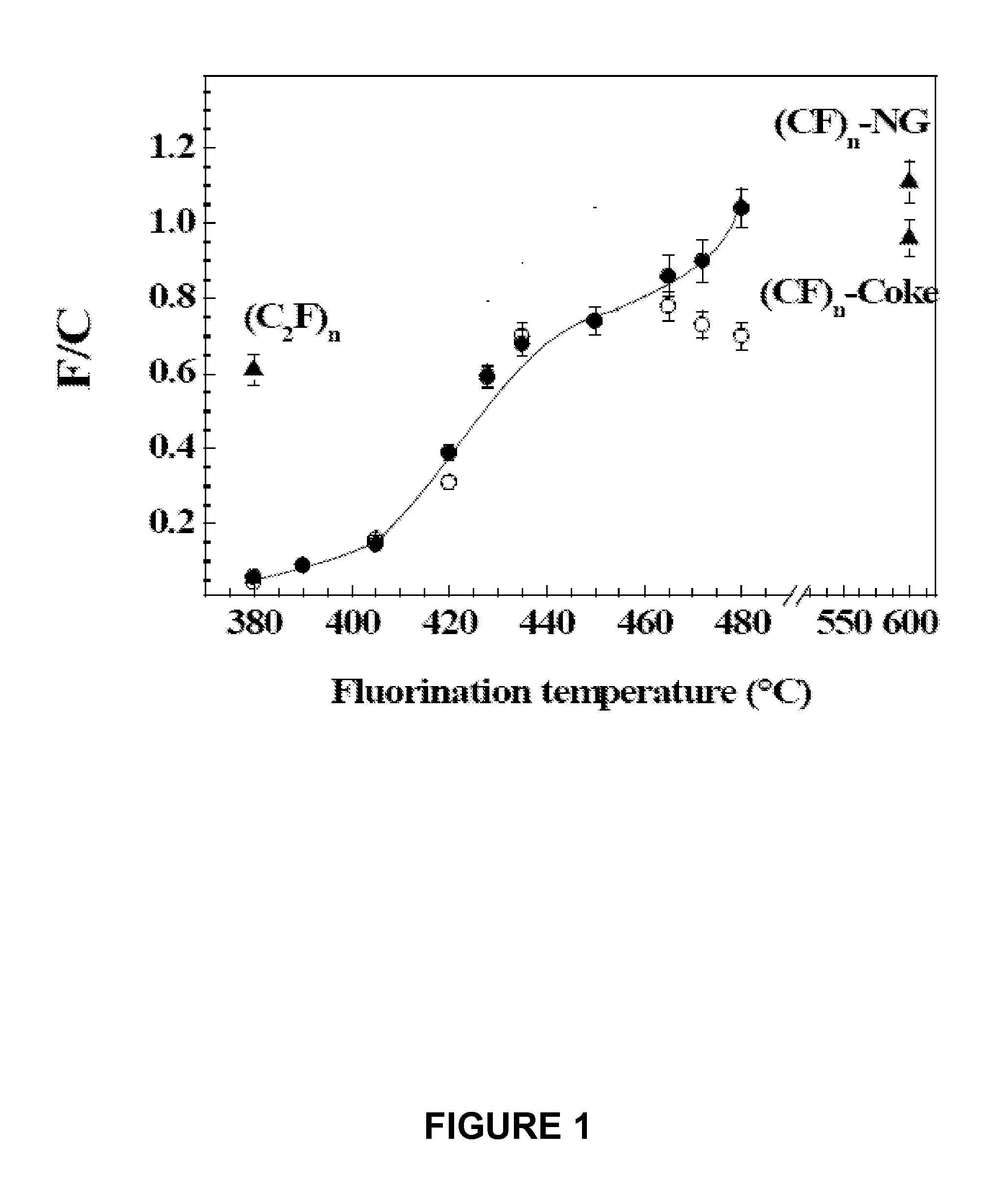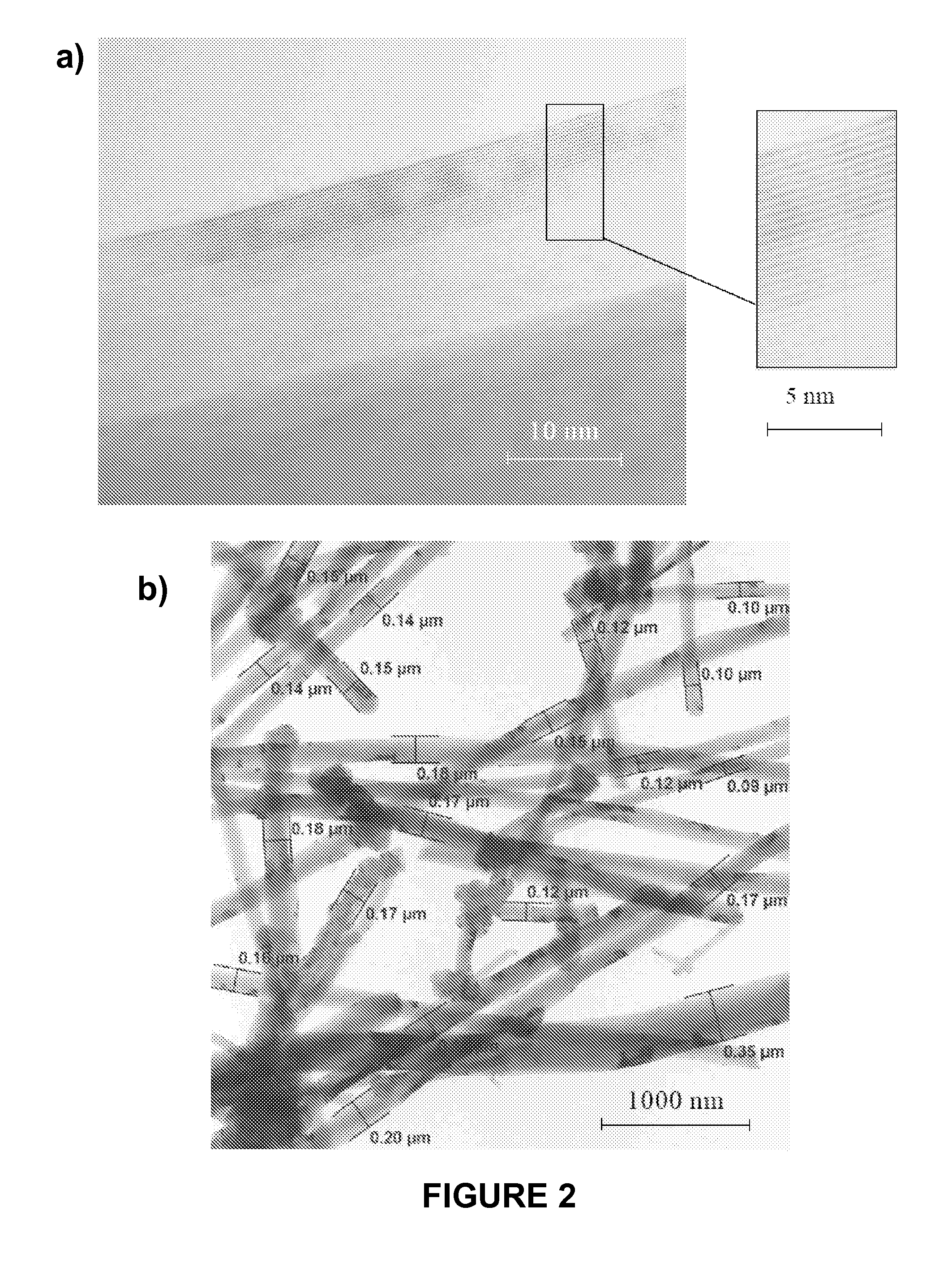Fluorination of multi-layered carbon nanomaterials
a carbon nanomaterial and fluorination technology, applied in the direction of non-aqueous electrolyte cells, cell components, transportation and packaging, etc., can solve the problem of partially destroyed structure, and achieve the effect of high discharge rate and good battery performan
- Summary
- Abstract
- Description
- Claims
- Application Information
AI Technical Summary
Benefits of technology
Problems solved by technology
Method used
Image
Examples
example 1
Reactivity of Carbon Nanofibers with Fluorine Gas
Overview
[0097] The following study highlights the reactivity of Carbon Nanofibers or Nanofibres (CNFs) with fluorine gas. Highly purified and graphitized CNFs were treated under a stream of fluorine gas for 16 hours at temperatures ranging from 380 to 480° C. Different fluorination temperature zones have been revealed by direct physicochemical analysis such as XRD, Raman spectroscopy, EPR and solid state NMR (13C and 19F). The comparison between various parameters such as covalence of C—F bond, T1 spin-lattice nuclear relaxation time, density and environment of the dangling bonds amongst others, allows the fluorination mechanism to be determined i.e. the formation (C2F)n type graphite fluoride as the precursor of richer (CF)n compound. This is supported by TEM characterization as the fluorination proceeds from the external parts of the carbon nanofibers and then propagates through the core without major structural change of the flu...
example 2
Electrochemistry of Fluorinated Carbon Nanofibers
[0149] For the electrochemical tests, electrodes were composed of the at least partially fluorinated carbon nanofiber sample, a conductive material and a binder. For the samples tested at a constant discharge rate of 10 Akg−1 whose results are shown in Table 3, the electrode composition was about 80% by weight of the fluorinated nanofibers, 10% by weight graphite, and 10% polyvinylidene difluoride (PVDF) 10% by weight as binder. The electrode was then mounted in a two electrode cell where the electrolyte was composed of a 1 mol.L−1 solution of LiClO4 dissolved in propylene carbonate. A microporous PVDF film containing the electrolyte was sandwiched between the graphite fluoride electrode and a lithium metal foil.
[0150] For the samples whose results are shown in FIGS. 13-16 and Table 4, the electrode composition was about 75% by weight of the fluorinated nanofibers, 10% by weight acetylylene black graphite, and 15% polyvinylidene dif...
PUM
 Login to View More
Login to View More Abstract
Description
Claims
Application Information
 Login to View More
Login to View More - R&D
- Intellectual Property
- Life Sciences
- Materials
- Tech Scout
- Unparalleled Data Quality
- Higher Quality Content
- 60% Fewer Hallucinations
Browse by: Latest US Patents, China's latest patents, Technical Efficacy Thesaurus, Application Domain, Technology Topic, Popular Technical Reports.
© 2025 PatSnap. All rights reserved.Legal|Privacy policy|Modern Slavery Act Transparency Statement|Sitemap|About US| Contact US: help@patsnap.com



